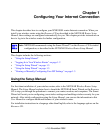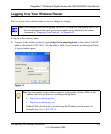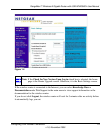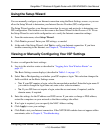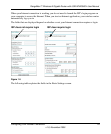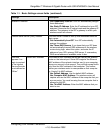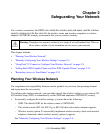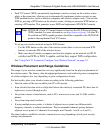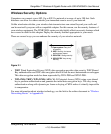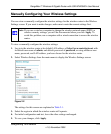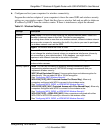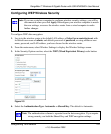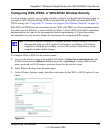
2-1
v1.0, November 2009
Chapter 2
Safeguarding Your Network
For a wireless connection, the SSID, also called the wireless network name, and the wireless
security setting must be the same for the wireless router and wireless computers or wireless
adapters. NETGEAR strongly recommends that you use wireless security.
This chapter includes:
• “Planning Your Wireless Network”
• “Manually Configuring Your Wireless Settings” on page 2-4
• “Using Push ‘N’ Connect to Configure Your Wireless Network” on page 2-9
• “Adding Both WPS-Capable Clients and Non-WPS-Capable Clients” on page 2-14
• “Restricting Access to Your Router” on page 2-15
Planning Your Wireless Network
For compliance and compatibility between similar products in your area, the operating channel
and region must be set correctly.
To configure the wireless network, you can either specify the wireless settings, or you can use Wi-
Fi Protected Setup (WPS) to automatically set the SSID and implement WPA/WPA2 security.
• To manually configure the wireless settings, you must know the following:
– SSID. The default SSID for the wireless router is NETGEAR.
– The wireless mode (802.11n, 802.11g, or 802.11b) that each wireless adapter supports.
– Wireless security option. To successfully implement wireless security, check each wireless
adapter to determine which wireless security option it supports.
See “Manually Configuring Your Wireless Settings” on page 2-4.
Warning: Computers can connect wirelessly at a range of several hundred feet. This can
allow others outside of your immediate area to access your network.



